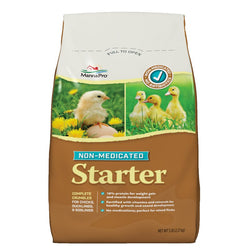Why are my chickens molting late, and how can I help them stay warm?
Back to blog
Chickens molt annually, usually in the fall. But some chickens do molt later than others. Often this varies by breed as well as the conditions under which they live.

Reasons your chickens may be molting late in the year:
- Your chickens begin molting when their bodies tell them it is time, and that is usually based on daylight hours. Decreasing day length is the normal trigger. Birds start at the end of August or beginning of September, while other breeds may wait until November or December.
- Adding light to their coop: Some people add light to keep their birds laying consistently year round. But this can throw off your birds' natural cycle. Eventually, their bodies will tell them to lose their feathers anyway. If it is not based on the usual triggers, it can come at an odd or inconvenient time.
- Stressful Events: Stresses caused by a temporary shortage of water (like frozen water), temporary shortages of feed, or other things can trigger a molt if your flock hasn't molted at the regular time of year. If you add light, that might have caused them to wait until it's very cold.
Late winter could certainly be problematic if you live in a very cold area. Especially if your girls are going through a "hard molt" rather than a "soft molt." With a hard molt, a chicken can lose most of her feathers all at once, which would leave her very cold. Typically, we recommend that if you choose to add light to the coop, you wait until after your flock's annual molt to do so. Waiting until after the molt to add light will mean they'll get the cues to molt on schedule rather than late when it's especially cold.
How to help your flock stay warm during a late molt:
If you have a chicken saddle, apron, or something similar, you might use it to give your late-molting girls a layer of protection when it is very cold outside and they are lacking in backside feathers. We sell saddles or aprons on our website.












